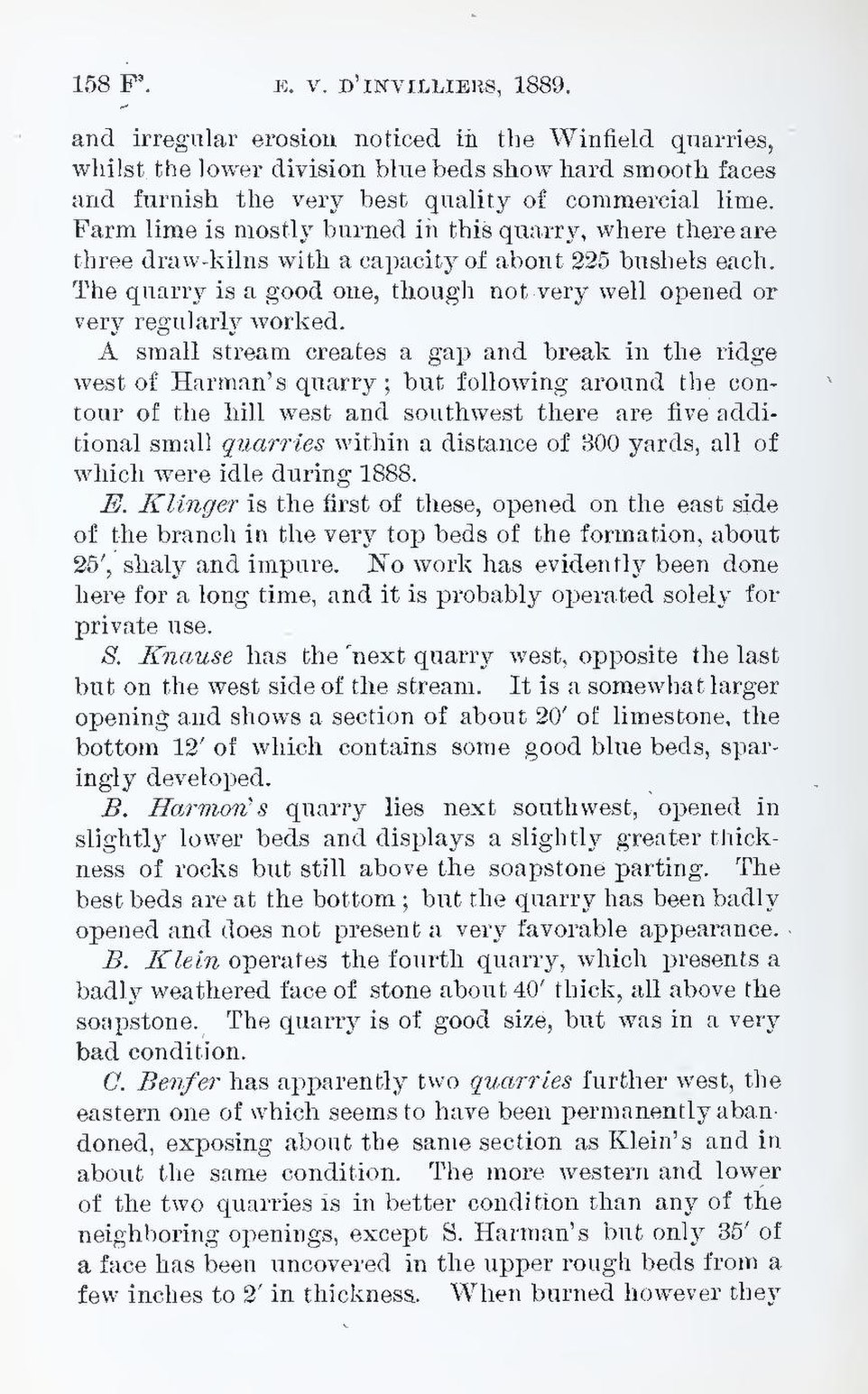and irregular erosion noticed in the Winfield quarries, whilst the lower division blue beds show hard smooth faces and furnish the very best quality of commercial lime. Farm lime is mostly burned in this quarry, where there are three draw-kilns with a capacity of about 225 bushels each. The quarry is a good one, though not very well opened or very regularly worked.
A small stream creates a gap and break in the ridge west of Harman’s quarry; but following around the contour of the hill west and southwest there are five additional small quarries within a distance of 800 yards, all of which were idle during 1888.
E. Klinger is the first of these, opened on the east side of the branch in the very top beds of the formation, about 25′, shaly and impure. No work has evidently been done here for a long time, and it is probably operated solely for private use.
S. Knause has the next quarry west, opposite the last but on the west side of the stream. It is a somewhat larger opening and shows a section of about 20′ of limestone, the bottom 12′ of which contains some good blue beds, sparingly developed.
B. Harmon’s quarry lies next southwest, opened in slightly lower beds and displays a slightly greater thickness of rocks but still above the soapstone parting. The best beds are at the bottom; but the quarry has been badly opened and does not present a very favorable appearance.
B. Klein operates the fourth quarry, which presents a badly weathered face of stone about 40′ thick, all above the soapstone. The quarry is of good size, but was in a very bad condition.
C. Benfer has apparently two quarries further west, the eastern one of which seems to have been permanently abandoned, exposing about the same section as Klein’s and in about the same condition. The more western and lower of the two quarries is in better condition than any of the neighboring openings, except S. Harman’s but only 35′ of a face has been uncovered in the upper rough beds from a few inches to 2′ in thickness. When burned however they
